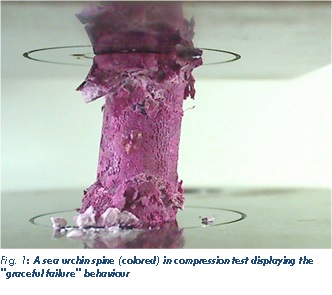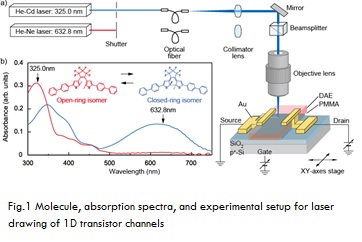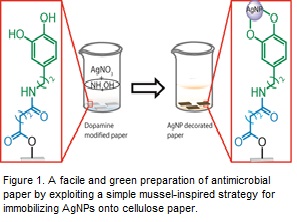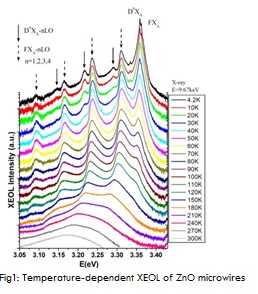Day 3 :
- Session II
Track 3: Advanced Emerging Materials
Track 5: Materials: Characterization and Applications
Location: West Minster South

Chair
Klaus G. Nickel
University Tübingen, Germany

Co-Chair
David Kennedy
National Research Council of Canada, Canada
Session Introduction
Klaus G. Nickel
University Tübingen, Germany
Title: The potential of improving building construction materials by a biomimetic approach
Time : 10:00-10:20

Biography:
Klaus G. Nickel is Professor for Applied Mineralogy at the Faculty of Science of the University of Tübingen. His career involved a Dipl-Geol. from the University of Mainz (D), a PhD from the University of Tasmania (Hobart, AUS) and research positions at Max-Planck-Institutes (for Chemistry, Mainz, and Metals Research, Stuttgart). His main research interest is in materials science in the field of advanced ceramics and composites. The research covers processing, characterisation and evaluation of technical ceramics, typically alumina and zirconia in the oxides and carbon, carbides, nitrides, borides on the non-oxide side. Particular expertise exists in the chemical property evaluation (oxidation and corrosion). Other research goals are phase relations, mechanical properties and bionics of biomaterials and ceramics.
Abstract:
The design of spines from some reef inhabiting sea urchins (Heterocentrotus mamilatus, Phyllacanthus imperialis) has been shown to be responsible for a high energy dissipation during compressive straining. It is shown that unusually high stresses are required to compress the material, which fails in a "graceful" manner during an overall straining of several tens of percent. The principal behind the mechanism involves the layering / gradation / ordering of pore space within a basically brittle material (Calcite). We will show the details of the structures and the results of the characterization by uniaxial compression and pin indentation. The natural material has a hierarchical design including a structuring on the nano-scale to prevent a failure by simple cleavage. It would therefore be difficult to scale up all structural features of this brittle material. We will discuss how improvements of material can nonetheless be implemented by abstracting only the more macroscopic features and choosing a suitable material.
First efforts to apply this biomimetic principle to concrete as a modification of functional graded concretes confirm the effectiveness in construction materials. The design is not only beneficial for failure tolerance in cases of impacting objects but improves at the same time thermal insulation properties and lowers the total weight of constructions. The concrete was realized by spraying and slip casting methods. We will also present a recently developed alternative method for the manufacture of 3D concrete constructions (“hydroplotting”), which allows the realization of very detailed designs.

David Kennedy
National Research Council of Canada, Canada
Title: Quantifying the biological fate of nanosilver
Time : 10:20-10:40

Biography:
David Kennedy is an expert in biological inorganic chemistry with nearly a decade of experience working at the nano-bio interface. He currently works in the areas of nano- and bio-metrology at the National Research Council Canada. Previously, David has also held posts in chemical biology, molecular imaging and nanomedicine both at the NRC and MPI in Berlin, Germany. Currently David is focused on building new tools for standardizing measurements of nanomaterials in biological systems. This also includes the use of new nanobiomaterials used to mimic living tissues. Research in David’s lab also partners across several other government organizations including Health Canada, Environment Canada and the Canadian Food Inspection Agency, as well as several different parts of the NRC.
Abstract:
With a growing number of high precision tools for studying biological systems, it is important to develop traceable quantitative methods that result in accurate measurements. Because biological systems are both complex and fluxional, context is vitally important for such measurements in order for them to be accurate. Correlation of measurements through space and time can provide such quantitative assessments. Metallic nanoparticles pose many challenges for measurement in cellular systems. The metal can interfere with the detection method and the particles can change in size and shape over time and in association with different biological molecules.
At the National Research Council we seek to correlate detailed physical characterization of silver nanoparticles with biological measurements to generate methods for measuring the impact of nanosilver on different cell types and quantifying the specific interactions of nanosilver with biological molecules. Correlating changes in nanoparticles over time in biological fluids helps to provide an understanding of nanoparticle behaviour and results in higher reproducibility of observed biological endpoints. Surface coatings play a pivotal role in recognition of the particles by cellular receptors suggesting active transport plays a critical role in the nanosilver life cycle.
Physical and chemical differences between silver nanoparticles and changes that occur in biological test media can be correlated to toxicity, and different mechanisms for toxicity are apparent. Uptake rates and localization is also different between different cell lines. Uptake and localization of particles provides evidence that nanosilver should not be treated as a single material but should be studied as an array of materials with different properties in different biological systems.
Yutaka Wakayama
National Institute for Materials Science (NIMS), Japan
Title: Photochromic organic field-effect transistors: Molecules, device properties and laser patterning of circuits
Time : 11:00-11:20

Biography:
Yutaka Wakayama served at Asahi Glass Company, as a research engineer from 1989 to 1994. He was a research staff member at Tanaka Solid Junction Project, ERATO, JST from 1994 to 1998, and received his Ph. D degrees from University of Tsukuba in 1998. After working as a postdoctoral fellow at Max-Planck Institute for Microstructure Physic, Germany in 1998-1999, he joined National Institute for Materials Science (NIMS) in 1999. Now, he belongs to International Center for Materials Nanoarchitectonics (WPI-MANA) of NIMS. His current research interests are self- and directed-assemblies of molecules, functional organic field-effect transistors and molecular nanoelectronics.
Abstract:
We developed an optically controllable organic field transistor (OFET) by employing photochromic diarylethene (DAE) molecules as a transistor channel layer. DAE molecules are known to undergo photochromic reaction, i.e., reversible conformational change between closed- and open-ring isomers by alternating ultraviolet (UV) and visible (VIS) light irradiation. We found that the drain current in the DAE-based OFET also showed reversible change accompanied by this conformational change; the closed-ring isomer produced by UV light exhibited a transistor operation under appropriate gate and drain bias voltages, meanwhile the open-ring isomer produced by VIS light showed no drain current. As a result, a remarkably high on/off ratio of 1,000 was achieved. The drain current modulation can be attributed to the drastic transformation in the π-conjugation system in association with the photo-isomerization. These results present two important messages. The first one is that this compound has dual properties: organic semiconductor and photochromism. The second is that a phase transition between semiconductor and insulator can be induced by light irradiation.
Based on these achievements, we demonstrate laser drawing of one-dimensional (1D) channels on an OFET with a photochromic DAE layer (See Fig.1). The main findings are: i) a number of 1D channels can be written and erased repeatedly in the DAE layer by scanning UV and VIS focused laser spots alternately between the source and drain electrodes, ii) the conductivity of the 1D channel can be controlled by the illumination conditions, and iii) it is possible to draw an analogue adder circuit by optically writing 1D channels so as to overlap a portion of the channels and perform optical summing operations by local laser illumination on the respective channels. These findings will open new possibilities of various optically reconfigurable low-dimensional organic transistor circuits, which are not possible with conventional thin film OFETs.

Md.Shafiul Azam
Bangladesh University of Engineering and Technology, Bangladesh
Title: A bioinspired strategy for immobilizing silver nanoparticles towards the synthesis of antimicrobial paper
Time : 11:20-11:40

Biography:
Dr. Azam is the principal investigator of a materials and surface chemistry research group in the department of chemistry at Bangladesh University of Engineering and Technology (BUET), Dhaka, Bangladesh. His multidisciplinary research is focused on the development of new multifunctional materials for energy, health and environment. Multicomponent hybrid materials for achieving increased complexity and functionality in nanoparticles have attracted enormous attention from researchers. These nanomaterials are composed of discrete domains of different components and thus can exhibit the properties of different components in the same assembly. In the Azam group, they synthesize surface-tailored, size-controlled inorganic nanoparticles and polymeric materials as well as investigate their properties and potential applications.
Abstract:

Lay Shoko
Vaal University of Technology, South Africa
Title: Effects of the chemical composition of coal tar pitch on the baking zone temperature in Soderberg electrode systems
Time : 11:40-12:00

Biography:
Lay Shoko completed his Ph.D majoring in Chemistry from North West University (South Africa) in 2014. He is currently working as a Senior Research Technologist in the Department of Chemical Engineering at the Vaal University of Technology. His thesis was focused on the studying the effects of the chemical composition of coal tar pitch on dimensional changes during graphitization. He is currently working on a projects the involve producing activated carbon from coal tar pitch and its application in removal of phenols from waste water.
Abstract:
Coal can be converted to different chemical products through processes such destructive distillation. The destructive distillation of coal yields coke as the main product with by-products such as coal tar pitch (CTP). CTP has a wide range of applications especially in the carbon processing industries with typical applications including manufacture of anodes used in many electrochemical processes as well as Söderberg electrodes used in eletric arc furnances. This paper presents results from a study carried out to establish the baking isotherm temperature of coal tar pitch during thermal treatment. Thermomechanical analysis (TMA) was used to measure the dimensional changes which take place in pitch in the baking zone during thermal treatment. Elemental analysis, Fourier Transform Infra-Red (FT-IR) and Numclear Magnetic Resonace spectroscopy were used to evaluate the chemical composition of different raw and thermally treated coal tar pitch samples. The results from this study demonstrated that the baking isotherm temperature of coal tar pitch is the same irrespective of the chemical composition and origin of the coal tar pitch. In addition to that, the results also indicated that the coal tar pitches shrunk approximately 12% if exposed to temperatures above the baking isotherm temperature up to 1300°C.
Sang-Wook Han
Jeonbuk National University, Korea
Title: Growth, structural and electrical properties of VO2/ZnO nanostructures
Time : 12:00-12:20

Biography:
Sang-Wook Han published over 70 research papers in solid state physics, nanoscience, and nanotechnology and given over 30 invited lectures. His major research field is the micro-structural and chemical property characterizations of nanomaterials using X-ray absorption fine structure (XAFS) and nanomaterial applications including sensors, battery, and solar cells.
Abstract:
VO2 is a typical metal-insulator-transition(MIT) material with the bandgap of ~0.7 eV and the Tc of ~ 70oC. VO2 is transparent and dark below and above the Tc, so that it can be applicable for smart windows by controlling the temperature. VO2 nanoparticles in a metallic phase block and scatter sunlight. The scattered sunlight by VO2 nanoparticles can be used in solar cells. We examined the local structural and electrical properties from VO2/ ZnO nanostructures by using the simultaneous measurements of x-ray absorption fine structure(XAFS) and resistance. The structural and electrical properties of VO2 depend on the length of ZnO nanorods underneath VO2. Direct comparison of simultaneously-measured resistance and XAFS from the VO2 demonstrates that the transitions of structures, local density of the V 3d orbital states, and resistance occurred in sequence during heating, whereas the properties changed simultaneously during cooling. XAFS reveals a substantial increase of Debye-Waller factors, particularly, V-V pairs along the {111} direction in the metallic phase. XAFS results indicate that soft phonon above Tc plays a critical role in the collapse of a small band gap of VO2. The local structural and the electrical properties of VO2/ZnO nanorods are considerably sensitive to the interface of VO2/ZnO as well as the length of ZnO nanorods. The interface properties of VO2 hetero-structures of should be taken into account for its applications to smart windows and solar cells.
Bi-Hsuan Lin
National Synchrotron Radiation Research Center, Taiwan
Title: Temperatureâ€dependent hard Xâ€ray excited optical luminescence to study the optical properties of the ZnO microwires
Time : 12:20-12:40

Biography:
Bi-Hsuan Lin has completed his Ph.D. from Department of Photonics and Institute of Electro-Optical Engineering, National Chiao Tung University, Hsinchu, Taiwan and postdoctoral studies from European Synchrotron Radiation Facility (ESRF) for one year. Now He works at National Synchrotron Radiation Research Center as the assistant research scientist. He is participating the construction and commission of the X-ray nanoprobe beamlime at Taiwan Photo Source (TPS), and is responsible for development of the XEOL and TR-XEOL.
Abstract:
The advantages of using synchrotron radiation as the excitation source are that the tunable X-ray energy allows the preferential excitation of the elements through the X-ray absorption edges, and a suitable time structure of the synchrotron can be used to study the dynamics of luminescence of the materials. We develop the synchrotron based hard X-ray excited optical luminescence (XEOL) and time-resolved X-ray excited optical luminescence (TR-XEOL) at the X-ray Nanoprobe (XNP) facility at Taiwan Photon Source (TPS). In parallel to the construction of the XNP endstation, demonstrative XEOL experiments were conducted by unfocused X-ray beam at Taiwan Light Source (TLS). The low temperature (4.2K) and temperature-dependent XEOL with X-ray excited energy below, at and above the Zn K-edge (9.659keV) were used to obtain the further information of the optical mechanisms of the ZnO microwires. The temperature-dependent XEOL behavior of the ZnO microwires with X-ray energy at 9.67 keV was shown in Figure 1. The free A excitons, donor bound excitons and their phonon replicas can be seen unambiguously at low temperatures. The design of the XEOL and TR-XEOL at XNP and the demonstrative experimental results will be reported.

Lunch Break 13:10 onwards… @ Fraser
